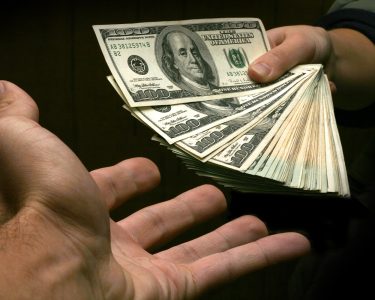The stock market has been on a roller coaster ride this past year, and with markets around the world soaring to new heights, it’s natural to wonder if the stock market is in a bubble. Is it headed for a crash or are we in the midst of a boom? The fact is, no one knows what the future holds. But we can take a look at historical data and some current indicators to get an idea of what might be coming next. In this blog post, we’ll discuss the state of the stock market today, as well as some key indicators that could signal whether or not we’re in a bubble. Read on to find out more about this fascinating topic.
What is a stock market bubble?
A stock market bubble is when the prices of stocks become artificially inflated due to high demand and speculation. This can lead to a situation where the prices of stocks are much higher than their actual value, and when the bubble eventually bursts, there is a sharp decline in prices. Bubbles can happen in any market, but they are most commonly associated with the stock market.
The current state of the stock market
The stock market has been on a tear in recent years, with major indexes hitting record highs. This has led to concerns that the market may be in a bubble.
There are a number of ways to measure whether the market is overvalued or not. One popular metric is the price-to-earnings ratio, which compares stock prices to earnings per share.
Currently, the S&P 500 has a P/E ratio of around 32. This is well above the historical average of around 15, and suggests that stocks are expensive relative to earnings.
Other measures also suggest that stocks are expensive. For example, the Shiller P/E ratio, which uses 10 years of earnings data, is currently at 34. This is also well above its long-term average of 16.5.
Of course, it’s important to remember that these metrics can fluctuate over time, and don’t necessarily mean that a crash is imminent. However, they do suggest that stocks may be due for a correction in the future.
Historical examples of stock market bubbles
There have been many historical examples of stock market bubbles, where prices have risen to unsustainable levels and then crashed. The most famous example is the Wall Street Crash of 1929, which led to the Great Depression. Other notable examples include the Japanese stock market crash of 1990, the dot-com bubble of the late 1990s, and the global financial crisis of 2008.
In each of these cases, there were warning signs that prices had become too high and that a crash was coming. However, it can be difficult to know when a bubble is about to burst, and many people continue to buy assets even as prices are falling. This can cause a bubble to collapse even further, leading to widespread economic hardship.
Are we in a stock market bubble?
It’s no secret that the stock market has been on a tear in recent years. But some market watchers are starting to wonder if we’re in a bubble.
On the surface, it’s easy to see why people might think that. After all, the Dow Jones Industrial Average is now hovering around 25,000, which is more than double where it was just five years ago. And the S&P 500 is also flirting with all-time highs.
But before you start panicking, it’s important to take a step back and look at the bigger picture. Yes, stocks have gone up a lot in recent years. But they’ve also come down a lot in the past. If you look at a longer-term chart of the Dow, you’ll see that it has yo-yoed its way higher over the last century or so. So while stocks may be pricey right now, they’ve been expensive before.
What’s more, there are plenty of reasons to believe that stocks still have room to run. The U.S. economy is doing well, corporate profits are strong, and interest rates are still relatively low. All of these factors could support further gains in the stock market.
So while it’s certainly possible that we’re in a bubble, there’s no guarantee that it will pop anytime soon. If you’re worried about it, the best thing you can do is stay diversified and keep your long-term goals in
The data says…
The data says that the stock market is not in a bubble. The data shows that the market is currently undervalued and has room to grow. The data also shows that the market has been in a bull market for the past nine years, and that this bull market is likely to continue for the foreseeable future.
Conclusion
The stock market is an incredibly complex system, and it can be difficult to determine whether or not a bubble exists. However, by looking at the data available we can come to some conclusions about current conditions in the market. While there is no definitive answer as to whether or not the stock market is in a bubble, the evidence suggests that things are relatively stable for now. That being said, investors should still remain vigilant and careful with their investments given that any number of factors could have an impact on the markets.



